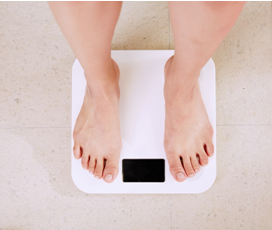
The "No Diet" Diet
Lose Weight without Pills, Exercise, or Dieting!
Fad Diets - Begone!
There have been as many Fad Diets as stars in the skies. People have tried the Twinkie Diet, the Water Diet, the Baby Food Diet, the Juice Diet, the Grapefruit Diet, the Cabbage Soup Diet, the Potato Diet, Shakes, Pre-made Meals, and even extreme diets like the "Cleansing Diet" (don't ask.)
Several have proven true and beneficial such as the Keto or Low-Carb diet or the Mediterranean Diet. Most, however, have been "invented" either by hucksters, or worse - by corporations that claim some miraculous power for those who buy their pills, books, machines, videotapes, belts, weights, or other gimmicks.
Each year some 100 million Americans are active dieters. The diet industry takes in over 3 billion dollars each year - a market total of over 66 billion dollars since the 1980s. The problem is that most of these pills and machines usually do not work, and the industry just repackages them with different names, shapes and sizes to re-purpose them to a whole new group of incoming novice dieters. If truth be told, people should avoid these diet fads.
So how about a no-cost way to lose weight?
Autophagy
Enter Autophagy. Autophagy is the feeding of the body upon itself, as in fasting. It is the body’s way of cleaning out damaged cells, in order to regenerate newer, healthier cells. And while it is also called “self-devouring” and something you might never want for your body, it’s actually beneficial to your overall health especially because it can remove the dysfunctional cells and recycle parts of them toward cellular repair and cleaning. It helps to remove debris and self-regulate back to optimal smooth function, sort of like a "reset" button to your body.
Autophagy can be extremely beneficial. One study on mice found that autophagy protected against cancer, neurodegenerative disorders, infections, inflammatory diseases, premature aging, and insulin resistance. Researchers also found in another study that removing the autophagy gene in mice caused weight gain, lethargy, higher cholesterol, and impaired brain function.
One of the strongest findings however, as would be expected, is that autophagy aids in significant weight loss. Ketosis is eating foods low in carbohydrates to such low levels that the body has no choice but to use fat as a fuel source. The ketogenic diet is a popular and successful diet, but hard to maintain for a prolonged period of time. But being in ketosis helps people lose body fat while retaining muscle, and autophagy is a basis for ketosis and helps stop metabolic dysfunction like obesity and diabetes
OMAD - Lose 20, 50, 100, 200+ pounds!
OMAD is the "One Meal A Day" program. It has all the benefits of autophagy as well as a ketogenic diet, with one great improvement.
With OMAD, one can eat whatever one likes, and in fact do not have to count calories or measure portions. OMAD removes those constant stresses. If you want pizza or have leftover pizza, you can have it for dinner despite the carb or calorie content. If you want potatoes, or bread, or pasta,or meat that isn't so lean, OMAD can still accommodate that.
The one rule with OMAD is that you can only eat once per day. The time is your choice. The amount you eat usually adjusts, although one still should not eat 3 or 4 portions. So with OMAD, one will "fast" for 22-23 hours each day, and eat only for a 1 hour period, say, from 6:00-7:00 pm - although the time period is up to you.
The dynamic it presents is that the body will process the food within a six hour period, and for the remainder of the day one is in a fasting/ketosis mode, i.e., burning fat.
It is amazing at how fast and steady one can lose weight with OMAD. And one other benefit is that the hunger pangs totally subside - usually after three days. Many people have reported losing 20, 30, 40 50, even 170 pounds on OMAD, and without pills, exercise, special equipment, or special high-cost foods and diets. And a bonus benefit is that rather than the expected fatigue, people find more energy, less lethargy, and an increased "willpower."
One lifetime dieter, Alice, gave OMAD a try. In a little over one year she
had lost 150 pounds, and had gone off her blood pressure and anti-depressant
medications, and found new energy and vitality. She found that OMAD was
not nearly as restrictive as any other diet, and that it gave her a new appreciation
for her foods and tastes.
Since then she has embarked on helping many of her friends discover
OMAD in their struggles in weight loss.
OMAD - simply eat once per day, and watch the weight decrease and your health increase. And OMAD is an easier food plan to stay with long term - it becomes self-sustaining.
Intermittent Fasting - Can also Lose 20-50 pounds
An alternative to OMAD, especially for people only needing to lose 10 or 20 pounds, is "Intermittent Fasting." Intermittent fasting is similar to OMAD, only the primary dynamic is that a person only eats twice per day - only two meals, and that is usually after a 16 hour window of fasting. For example, a person may fast from 7:00 p.m., and eat lunch at 12:00 noon, and dinner at 6:00. Here there may even be a small snack at 3 or 4:00. The concept is the same, the body will enter into fasting mode during those 16 hours without food, and burn fat. The weight loss is more gradual and not as pronounced, but many find this an easier lifestyle to stay with. As with OMAD, there is no need for pills, an exercise regiment, or specific foods, but it is imperative that one stays within the 8 hour "eating timeframe", and again, not consume overly large portions.
Intermittent fasting is usually a 16 hour (fasting) and 8 hour (eating period), but can be adjusted to other time periods such as an 18 hour fasting and 6 hour eating period. The time slot is adjustable as you need. Many people also do intermittent fasting for 5 days each week and relax it on the weekends.
Intermittent fasting is a sound and viable alternative to OMAD, and can especially be used after an OMAD period where one achieved their weight loss goals and now just wants maintenance.
Warrior Diet
The Warrior Diet was created in 2001 by Ori Hofmekler. It is based on the eating patterns of ancient warriors, who "consumed little during the day and then feasted at night." It is a way of eating for cycles of extended periods of little food intake, with short windows of eating and overeating, and can be an effective way to both lose weight and improve energy levels and mental clarity.
Essentially, the Warrior Diet is a type of intermittent fasting. Here, people would "undereat" for 20 hours per day, then consume as much food as desired during the 4 hour period at night. During the 20-hour fasting period, dieters can consume small amounts of dairy products, hard-boiled eggs and raw fruits and vegetables. During the 4-hour period at night, people can essentially binge on any foods they want, although unprocessed, healthy and organic food choices are encouraged. Initially there is a 3-week plan divided into phases, with the full plan then following. In some ways, people may view the Warrior Diet as more extreme than that of OMAD or Intermittent Fasting.
The Right Plan for You
The problem with diets is that they are heard to follow and maintain long term. Some actually increase hunger unavoidably, and others are too expensive and hard to navigate.
Autophagy, either through the OMAD method, Intermittent Fasting method, or the Warrior Diet, has proven to achieve significant weight loss goals, and long term maintenance with minimal effort. It also reduces the discouragement factor as you see the weight dropping virtually on a daily basis. With OMAD or Intermittent Fasting one does not need energy pills or metabolism pills, exercise equipment, rigorous workouts, or expensive foods and pre-made meals.
Truly, many people have lost weight through ketosis, and both OMAD and Intermittent Fasting were the primary vehicles that helped them achieve their goals.
Editor's Note: This article should not be construed as medical advice, and as with all diets and exercise programs one should consult a doctor before trying a particular program.

